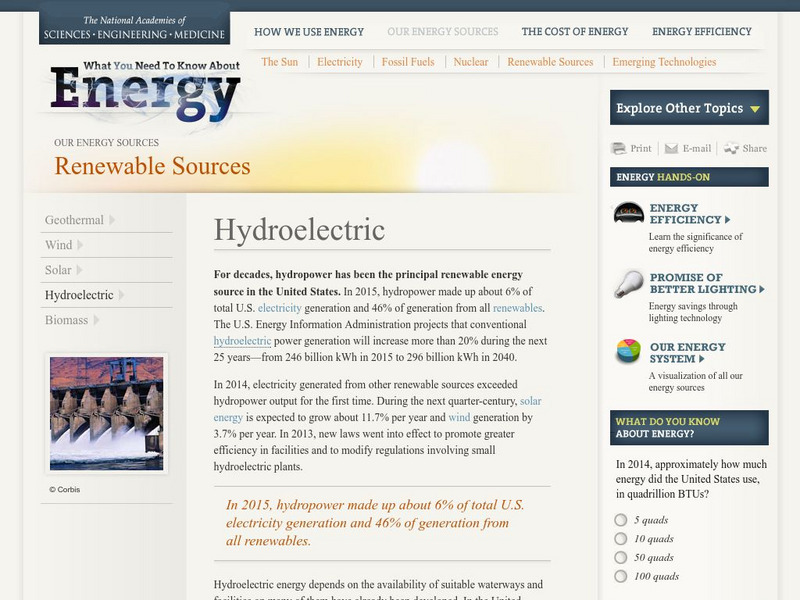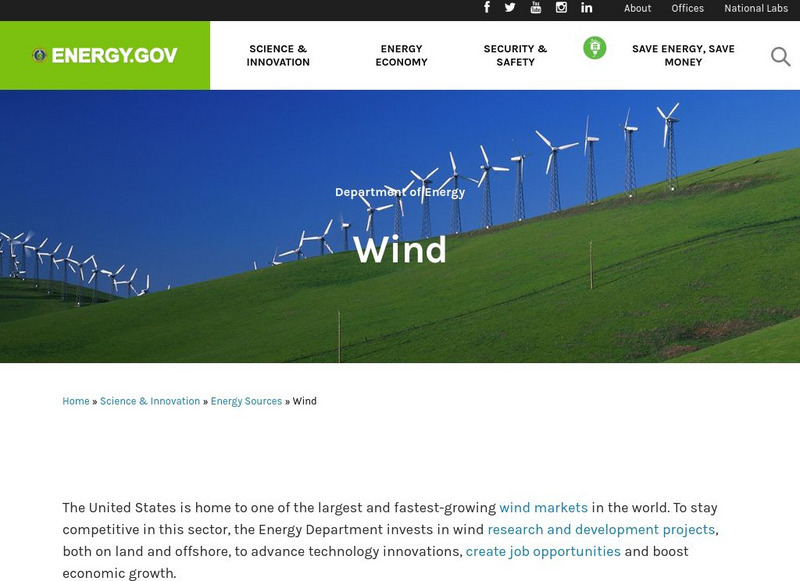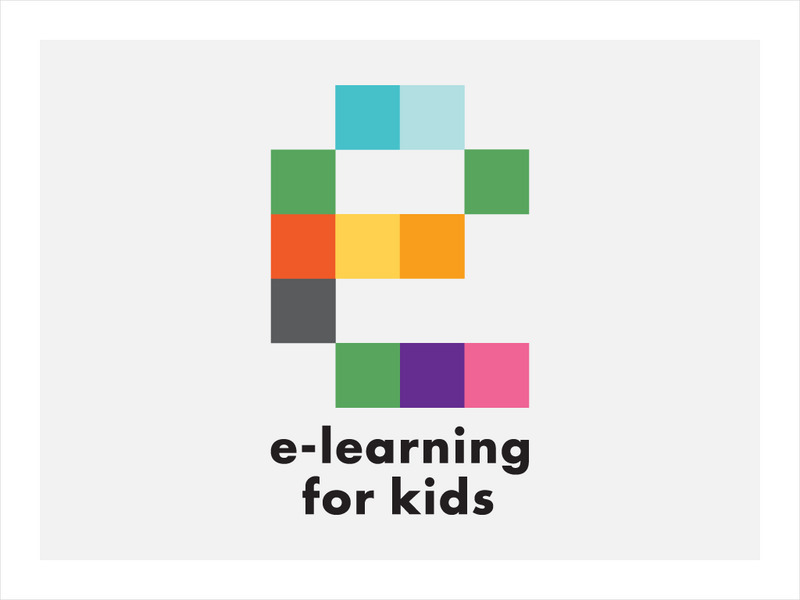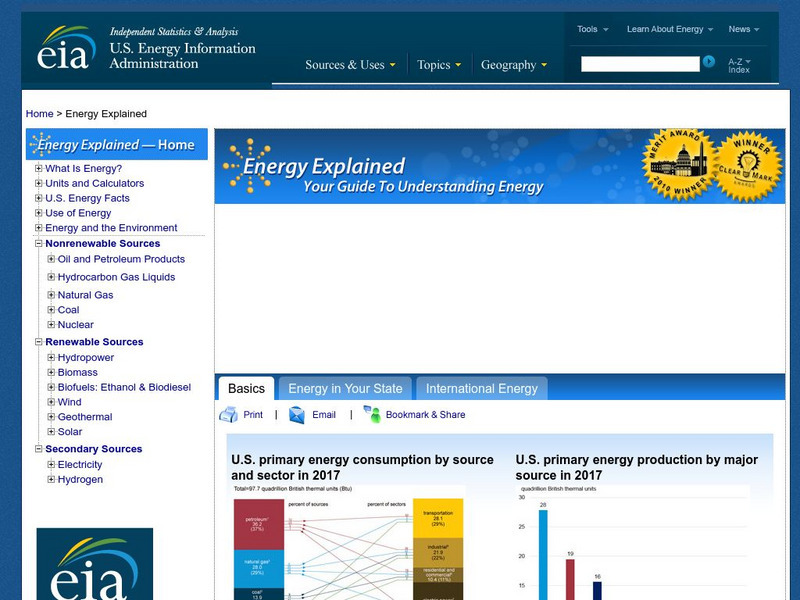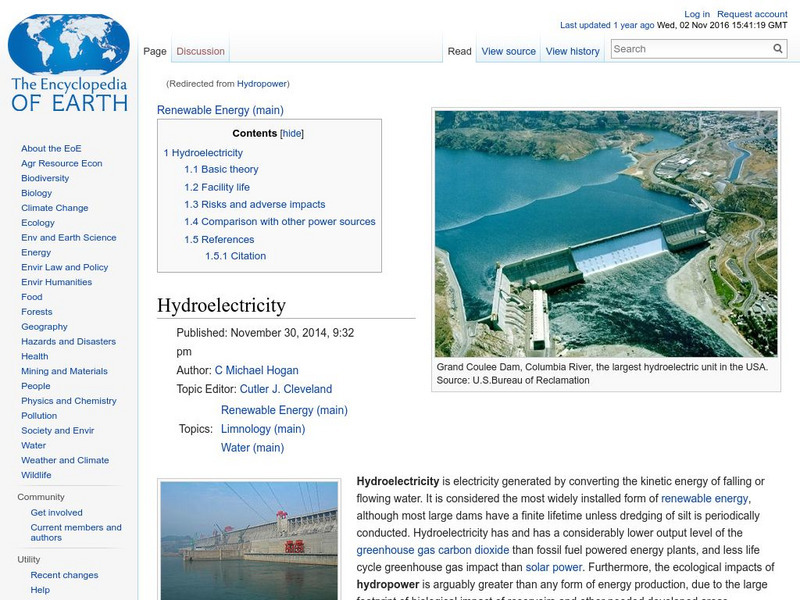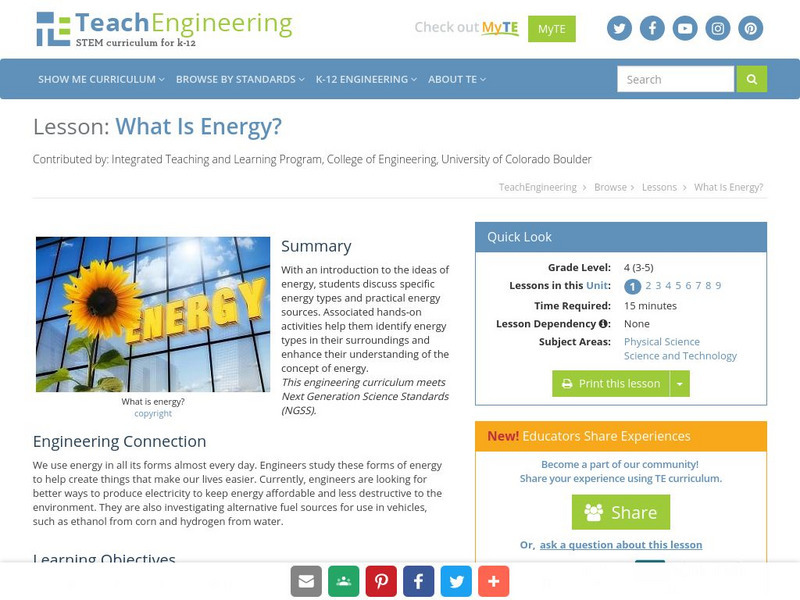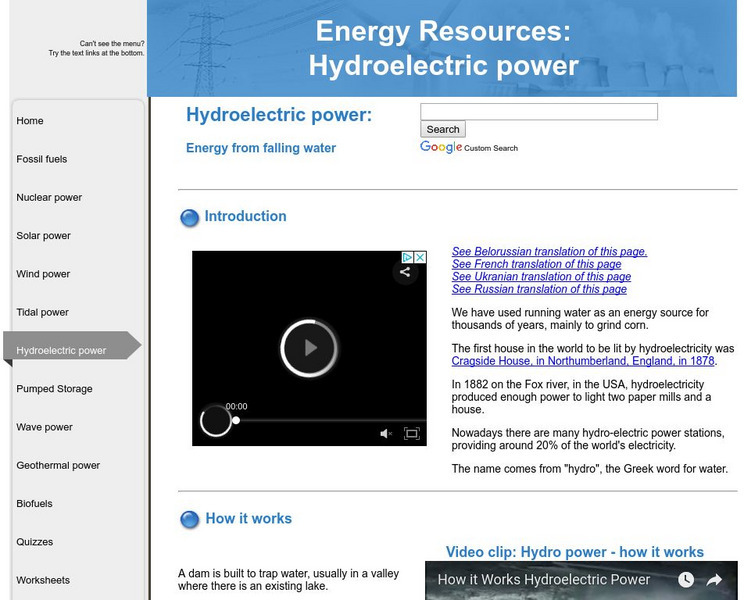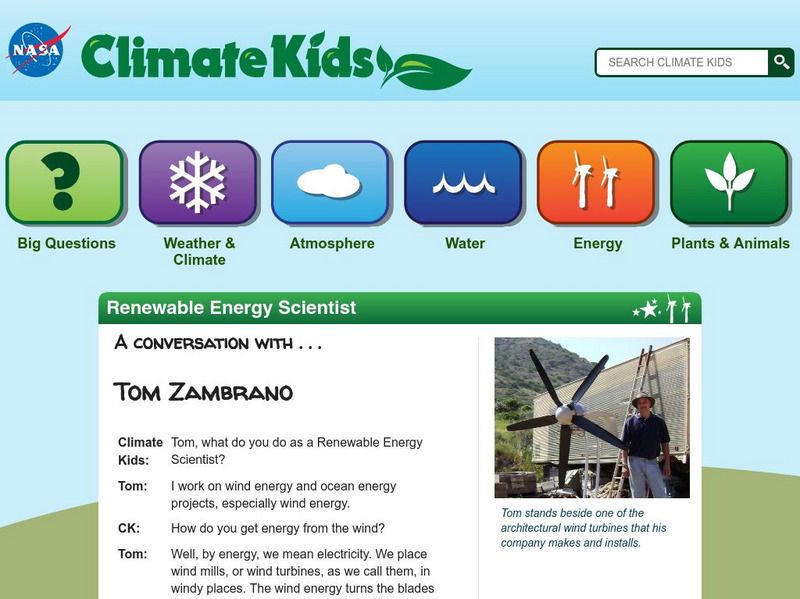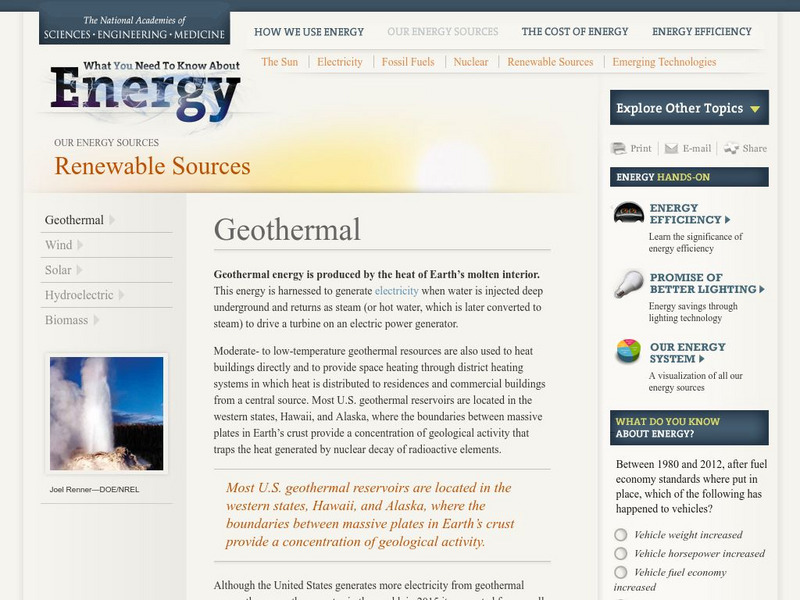Hi, what do you want to do?
Other
Seeds Foundation: Hydroelectricity
Have you ever tried to walk across a flowing stream? Have you ever watched a news report that showed cars and bridges being washed away by a flood? These experiences and events suggest the force of moving water, which provides a...
Sophia Learning
Sophia: Energy: Machines, Motion and Light
An introductory lesson describing the definition of energy, and highlighting different sources of usable energy.
Energy for Sustainable Development
Esd Bulgaria: Kids & Energy: Electricity
Electricity is the flow of electrical power or charge. It is a secondary energy source which means that we get it from the conversion of other sources of energy, like coal, natural gas, oil, nuclear power and other natural sources, which...
US Energy Information Administration
U.s. Eia Energy Kids: Energy Basics
Learn about the definition of energy, the forms that it comes in, and the difference between renewable and nonrenewable sources.
US Energy Information Administration
U.s. Eia Energy Kids: Renewables: Biomass
Comprehensive overview of the use of biomass as a renewable energy source. Learn what it is, its forms, its uses, and its impact on the environment.
Science Education Resource Center at Carleton College
Serc: Energy Gallery Walk
A cooperative learning activity using the Gallery Walk Strategy to enrich student understanding of the complex nature of solving our nation's energy needs.
State Energy Conservation Office-Texas
State Energy Conservation Office: Feasibility of Photovoltaic Systems [Pdf]
Summarizes how a photovoltaic or PV system works to convert solar energy into electricity. Explains how to estimate what size of PV system is needed and what the cost would be, and provides a worksheet with formulas for calculating...
Biotechnology Institute
Biotechnology Institute: Your World: Biofuels: Energy for Your Future [Pdf]
Students can read this full-length download of the biotech magazine which discusses how biofuels could be the energy of the future, and meet all our energy needs.
National Academies of Sciences, Engineering, and Medicine
The National Academies: Renewable Sources: Hydroelectric
Hydroelectric power has been a major source of energy production in the United States. More recently, other alternative energy sources have taken some of its market share. Hydroelectricity has both advantages and disadvantages, briefly...
National Academies of Sciences, Engineering, and Medicine
The National Academies: Renewable Sources: Wind
The status of wind energy production in the United States is described, with the advantages and disadvantages of this alternative energy source.
Other
Florida Dept. Of Education: Conservation of Renewable and Nonrenewable Resources
In this learning module, students learn to differentiate between renewable and nonrenewable resources, and identify resources that fit into each category. It explains the environmental effects of using nonrenewable resources, such as...
US Department of Energy
U.s. Department of Energy: Energy Efficiency: Wind Energy Technologies
Find out about the renewable energy resource using wind energy technologies. Learn about the use of wind for a stand-alone system, and how one uses it in large-scale wind farms.
E-learning for Kids
E Learning for Kids: Scotland: What Is the Difference Between Renewable and Nonrenewable Resources?
Looks at types of natural resources that can be used for energy, and the difference between renewable and nonrenewable energy sources.
State Energy Conservation Office-Texas
State Energy Conservation Office: Generating Electricity With Biomass
Discusses the overall picture of biomass use as a source of renewable energy in the United States. Five methods of generating electricity from biomass are described.
EL Education
El Education: Renewing Our Future
After completing research and field-work, students create a calendar with photographs, illustrations, and information about four different types of renewable energy: solar, wind, hydropower, and biomass.
US Energy Information Administration
U.s. Eia Energy Kids: Energy Explained
A comprehensive source of information about energy in all its forms. Each type of energy is explained, along with information about its environmental impact, supported with graphs, charts, and other data. There is a twenty-question quiz...
CK-12 Foundation
Ck 12: Life Science: 12.29 Renewable Resources
Learn how some renewable resources contribute to alternative energy sources.
Christian Science Monitor
Cs Monitor: Why One Town in Oil Rich Texas Is Ditching Fossil Fuels
The city of Georgetown in Texas has decided that it is more economically feasible for them to meet their energy needs using renewable energy resources. Learn the rationale behind this unusual decision in an oil-rich state. (Published:...
Encyclopedia of Earth
Encyclopedia of Earth: Renewable Energy: Hydroelectricity
Explains, in scientific terms, what hydroelectric energy is and how it is produced. Discusses the lifespan of a hydroelectric facility, the risks and adverse effects of producing hydroelectricity, and how this form compares with other...
TeachEngineering
Teach Engineering: What Is Energy?
With an introduction to the ideas of energy, learners discuss specific types of energy and the practical sources of energy. Hands-on activities help them identify types of energy in their surroundings and enhance their understanding of...
Other
Energy Resources: Hydro Electric Power
Alternative forms of energy site showcases Hydro-electric power. Discover how it works, it's advantages and disadvantages as well as whether or not it's considered to be a renewable resource.
NASA
Nasa: Climate Kids: Renewable Energy Scientist
A conversation with Tom Zambrano, a scientist who studies wind and ocean energy.
Other
David Suzuki Foundation: Climate Solutions
People power is the key to accelerating renewable energy in our homes and throughout our country. By acting together, we can drive real change in Canada that results in cleaner air, healthier communities and sustainable energy systems.
National Academies of Sciences, Engineering, and Medicine
The National Academies: Renewable Sources: Geothermal
Geothermal energy is being used today on a small scale but is an appealing alternative to other sources of energy as it has little impact on the environment. This source of energy and how we are harnessing it are described here.






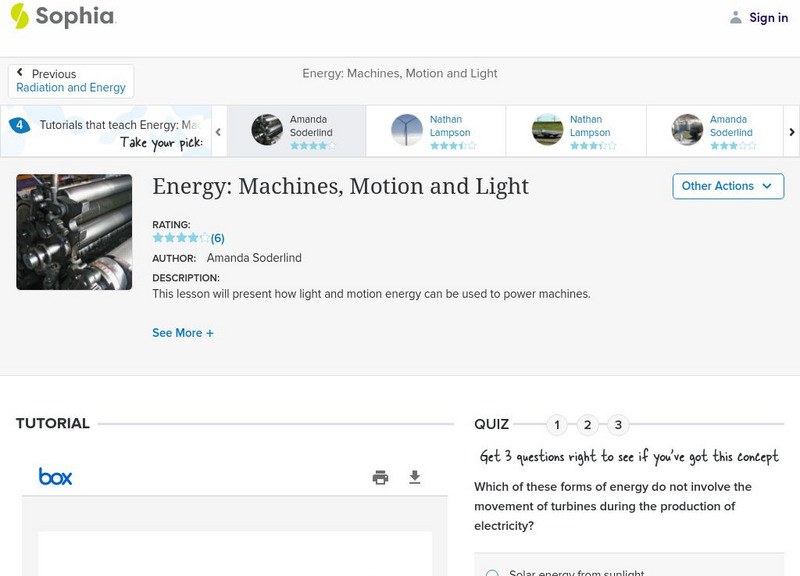


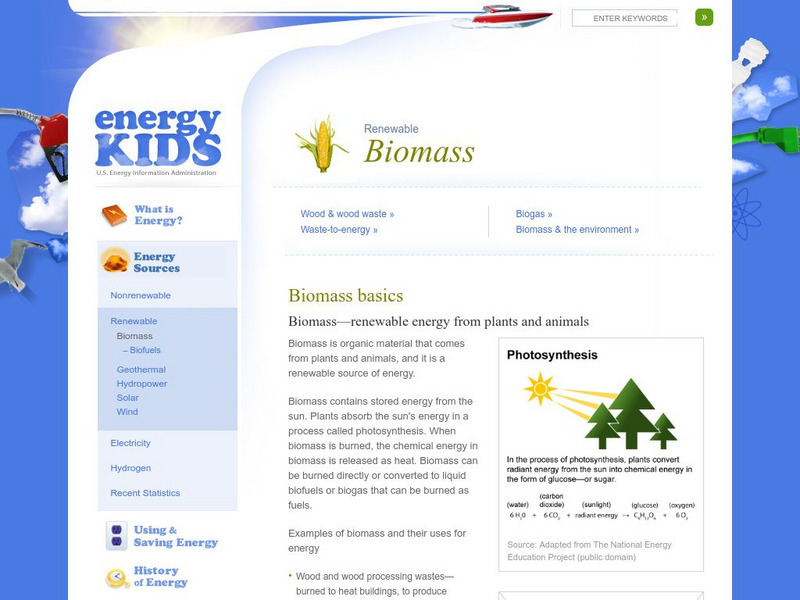

![State Energy Conservation Office: Feasibility of Photovoltaic Systems [Pdf] Handout State Energy Conservation Office: Feasibility of Photovoltaic Systems [Pdf] Handout](https://static.lp.lexp.cloud/images/attachment_defaults/resource/large/FPO-knovation.png)
